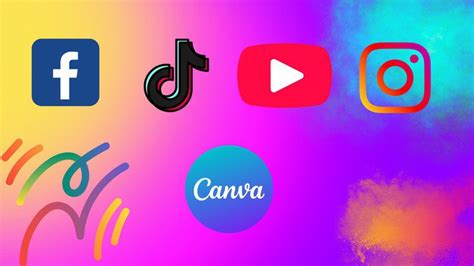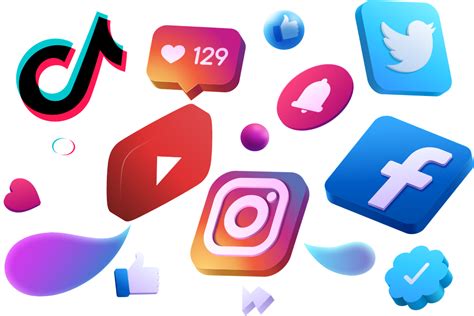Creating eye-catching visuals is essential for capturing attention and conveying your message effectively, whether you’re designing for social media, presentations, or marketing materials. Canva, a user-friendly design platform, has become the go-to tool for professionals and beginners alike to craft stunning designs with ease. In 2024, mastering Canva’s latest features and techniques is more crucial than ever. This article will guide you through the top Canva design tips and tricks to elevate your visuals, from selecting the right templates to customizing fonts, incorporating high-quality images, and exploring advanced tools like animation. Whether you’re a seasoned designer or a novice, these insights will help you create professional, impactful designs that stand out.
Come explore this topic with zokablog.com for a deeper understanding.
1. Getting Started with Canva: Essential Tools and Features
To kick off your journey with Canva, it’s important to familiarize yourself with its essential tools and features. Canva’s user interface is designed to be intuitive, making it accessible even for beginners. Start by exploring the main dashboard, where you’ll find a variety of templates, design elements, and project types. The drag-and-drop editor is central to Canva’s functionality, allowing you to effortlessly add and arrange text, images, and other design components.
Key tools include the text editor, where you can customize fonts, colors, and sizes, and the elements tab, offering a vast library of shapes, icons, and illustrations. The uploads feature lets you incorporate your own images and graphics, making personalization a breeze. Canva’s grid and frame tools are particularly useful for maintaining alignment and structure in your designs.
As you become more comfortable, explore the background and color palette options to set the tone of your visuals. By mastering these basic tools, you’ll be well-equipped to create professional, polished designs that meet your project’s needs.

2. Choosing the Right Templates for Your Projects
Selecting the right template is crucial for the success of your Canva design project. Templates serve as the foundation, providing structure and inspiration while saving you time. Canva offers a vast library of templates categorized by project type—such as social media posts, presentations, flyers, and more—making it easy to find one that suits your specific needs.
Begin by considering the purpose and audience of your project. For example, if you’re creating a social media post, look for templates that are optimized for the platform you’re targeting, whether it’s Instagram, Facebook, or LinkedIn. Templates designed for these platforms come with pre-set dimensions and layouts, ensuring your content looks professional and fits perfectly.
Next, consider the style and tone you want to convey. Canva’s templates range from minimalistic and modern to bold and vibrant. Choose one that aligns with your brand identity or the message you want to communicate. Don’t be afraid to explore different options—Canva allows you to preview and experiment with multiple templates before making a decision.
Once you’ve selected a template, you can fully customize it to match your vision. Adjust colors, fonts, and elements to make it uniquely yours while maintaining the integrity of the original design. With the right template, you can create visually appealing and effective designs that resonate with your audience.

3. Customizing Text and Fonts for Maximum Impact
Customizing text and fonts is a powerful way to enhance the impact of your Canva designs. Text not only conveys your message but also sets the tone for your visual content. Start by choosing fonts that align with your brand or the theme of your project. Canva offers a wide range of fonts, from classic serifs to modern sans-serifs, as well as decorative and script fonts for more creative projects.
When selecting fonts, consider readability and consistency. For headlines, opt for bold and eye-catching fonts that draw attention, while body text should be clear and easy to read. Canva allows you to mix and match fonts, but it’s important to limit yourself to two or three complementary fonts to maintain a cohesive look.
Beyond font selection, take advantage of Canva’s text customization tools. You can adjust font size, color, and spacing to create visual hierarchy and emphasize key points. Experiment with effects like shadows, outlines, and letter spacing to add depth and personality to your text. By thoughtfully customizing text and fonts, you can create designs that are not only visually appealing but also effectively communicate your message.

4. Utilizing Canva’s Design Elements: Shapes, Icons, and Illustrations
Canva’s design elements—shapes, icons, and illustrations—are essential tools for adding creativity and visual interest to your projects. These elements can help break up text, highlight important information, and create a cohesive design that engages your audience.
Start by exploring Canva’s extensive library of shapes, which can be used to create backgrounds, frames, or visual dividers. Shapes can be customized in terms of size, color, and transparency, allowing you to tailor them to fit your design seamlessly.
Icons are perfect for simplifying complex ideas and adding visual cues. Whether you’re designing an infographic, a presentation, or social media content, icons can help convey your message quickly and effectively. Canva offers a wide variety of icons in different styles, from flat and minimalistic to detailed and colorful.
Illustrations, on the other hand, add personality and depth to your designs. Canva’s illustration library includes a range of styles to suit different project types, from whimsical drawings to more professional graphics. By strategically incorporating shapes, icons, and illustrations, you can elevate your Canva designs and make them more engaging and visually appealing.
5. Incorporating High-Quality Images and Graphics
Incorporating high-quality images and graphics is key to creating visually compelling Canva designs. Images can make your designs more relatable, attractive, and effective in communicating your message. Canva provides access to a vast library of stock photos, but you can also upload your own images to ensure your designs are unique and tailored to your needs.
When choosing images, prioritize relevance and quality. High-resolution images are essential to avoid pixelation and maintain a professional look. Consider the overall aesthetic and tone of your project—images should complement your design and enhance the story you’re telling.
In addition to photographs, graphics such as patterns, textures, and illustrations can add depth and interest to your designs. Use Canva’s built-in editing tools to adjust brightness, contrast, and filters to match your design’s color scheme and mood. Layering images and graphics creatively can also help draw attention to key elements and create a more dynamic composition. By thoughtfully incorporating high-quality images and graphics, you can make your Canva designs more engaging and impactful.
6. Creating Consistent Branding with Canva’s Brand Kit
Maintaining consistent branding is crucial for establishing a strong and recognizable identity, and Canva’s Brand Kit makes this easier than ever. The Brand Kit feature allows you to store and manage your brand’s key visual elements, ensuring that every design you create aligns with your overall brand identity.
To get started, upload your brand’s logo, color palette, and fonts into the Brand Kit. This creates a centralized repository of your brand’s assets that you can easily access when designing. Using consistent colors and fonts across all your materials not only reinforces your brand’s identity but also helps build trust and recognition among your audience.
With Canva’s Brand Kit, you can apply your brand’s colors and fonts to any template with just a few clicks, saving time and ensuring uniformity. Additionally, if you manage multiple brands or sub-brands, Canva allows you to create separate Brand Kits for each, keeping everything organized and easily accessible.
The Brand Kit also facilitates collaboration, making it easier for team members to adhere to brand guidelines. By providing everyone with access to the same set of assets, you can ensure that all communications—whether they’re social media posts, presentations, or marketing materials—are consistently branded.
Leveraging Canva’s Brand Kit is an effective way to maintain a cohesive brand presence across all your visual content, helping your brand stand out and stay memorable.
7. Advanced Tips: Animation and Interactive Designs
Exploring Canva’s advanced features, such as animation and interactive designs, can significantly enhance the impact of your visuals. Animation adds movement and attention-grabbing effects, making your designs more dynamic and engaging. Canva offers various animation options, from subtle text transitions to eye-catching element movements.
To get started, select an element or text box in your design, then choose the “Animate” option from the toolbar. You can apply different animation styles, such as “Fade,” “Rise,” or “Pan,” to create a lively effect. Experiment with timing and sequence to ensure the animations complement your overall design without overwhelming the viewer.
For interactive designs, Canva provides features that allow for clickable elements, which are ideal for creating presentations or interactive social media posts. You can add hyperlinks to text or images, directing viewers to external websites or other pages within your design.
Incorporating animation and interactive elements can make your content more memorable and engaging, especially for digital formats. However, use these features judiciously to maintain a balance between visual interest and usability. By leveraging Canva’s advanced tools, you can elevate your designs, making them stand out and effectively capture your audience’s attention.
8. Exporting and Sharing Your Designs: Best Practices
Once you’ve crafted your Canva designs, exporting and sharing them correctly is essential for maintaining their quality and ensuring they reach your intended audience effectively. Start by selecting the appropriate file format for your needs. Canva offers several options, including PNG, JPG, PDF, and MP4, each suited for different types of content and platforms. For high-quality images and social media posts, PNG or JPG formats are ideal. If you’re creating documents or printable materials, PDF is the preferred choice. For animated designs, exporting as MP4 ensures your animations play smoothly.
Before exporting, review your design for any errors or inconsistencies. Use Canva’s preview feature to see how your design will look in the chosen format. Make sure all elements are aligned and that text is readable.
When sharing, Canva allows you to publish directly to social media platforms, email, or even generate a shareable link. For collaborative projects, you can invite team members to view or edit the design directly within Canva.
By following these best practices for exporting and sharing, you can ensure your designs maintain their visual appeal and are effectively communicated to your audience, enhancing their overall impact.
Mastering Canva’s design tools and features can transform your visual content, making it both professional and impactful. From selecting the right templates and customizing text to utilizing advanced elements like animations and interactive designs, Canva offers a range of capabilities to enhance your projects. By incorporating high-quality images, maintaining consistent branding, and following best practices for exporting and sharing, you can create stunning visuals that captivate and engage your audience. Embrace these tips and tricks to leverage Canva’s full potential and elevate your design skills in 2024
zokablog.com